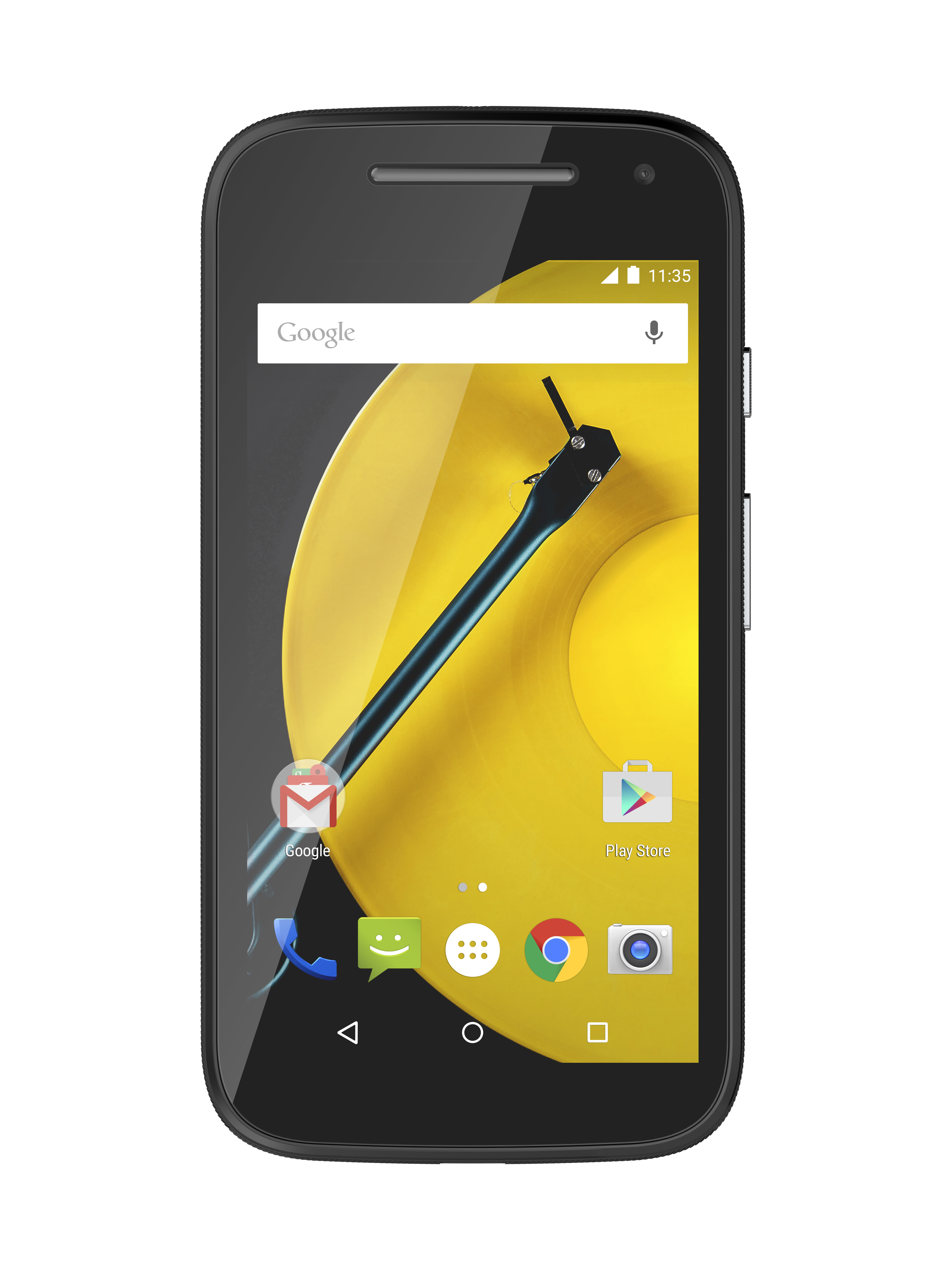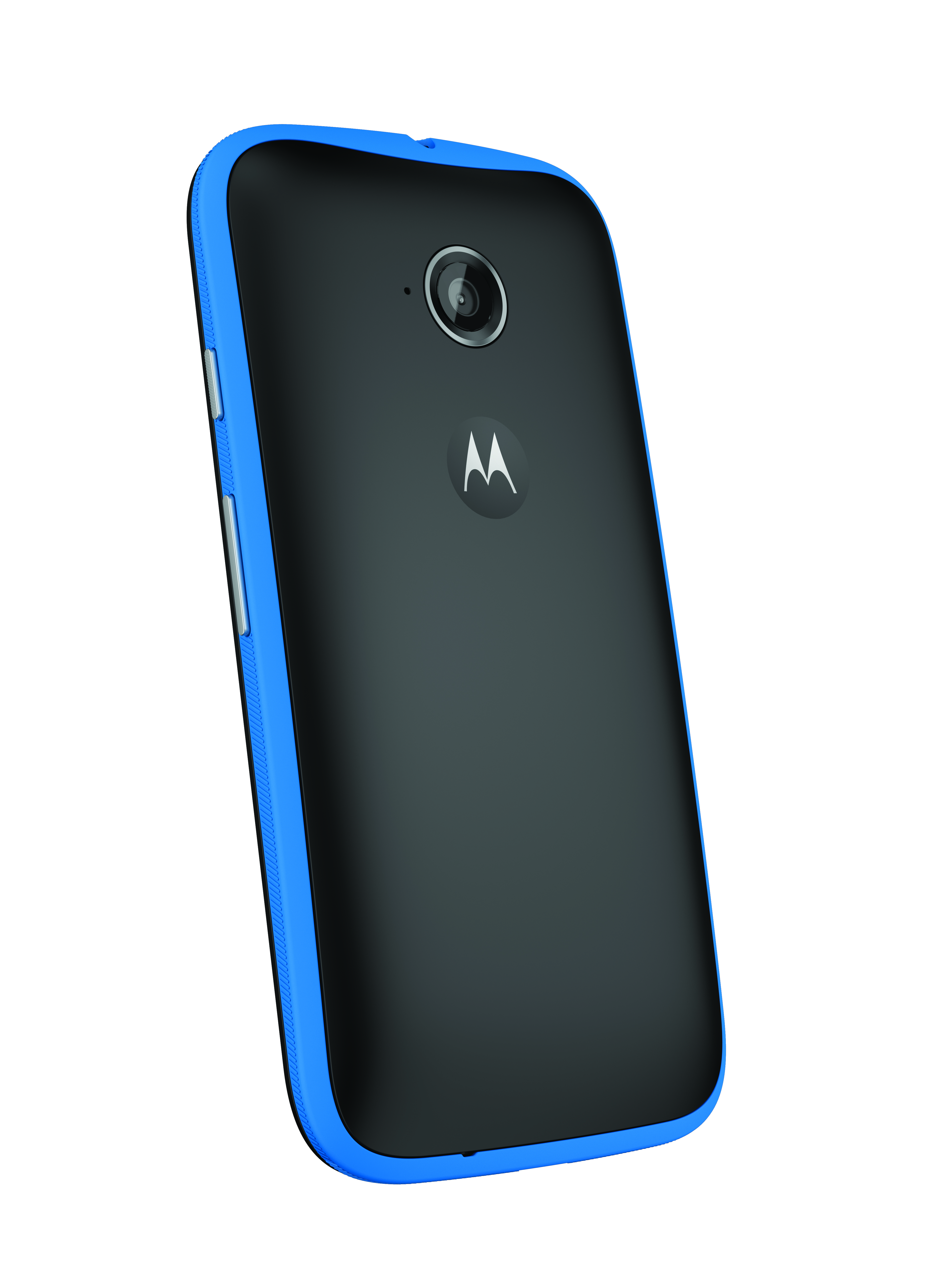Motorola Announces $150 Second-Gen Moto E, Rocks Snapdragon 410 And 4G LTE
Motorola announced the new Moto E (2nd generation), the latest iteration of the company's budget handset, and Motorola said that this version was developed with low cost in mind while attempting to bring the performance and features common in higher-end devices.
"When we were designing this new generation of Moto E, we went back to consumers who bought the first generation. We really listened to what they liked and how we could make this affordable device even more useful and more powerful. We were able to pack in a quad-core processor, an all-day battery, a new front-facing camera, and a 4.5" qHD display—and still keep the phone at an ultra affordable price," said Kristin Arnold, research design director at Motorola.
The smartphone features an ergonomic design that Motorola claims will fit comfortably in your hand. The company also designed what it calls a "Grip Shell" that goes along the edge of the device. Besides adding grip to the phone, it also comes in several colors that are easily changeable, allowing you to personalize the device.
Inside, Motorola has opted for a Qualcomm Snapdragon 410 SoC, over the Snapdragon 200 SoC used in the older Moto E. Although both are quad-core chips running at 1.2 GHz, the 410 moves on from the ARMv7 instruction set to ARMv8, giving it 64-bit compatibility.
The smartphone also adds built-in 4G capabilities and features an Adreno 306 GPU instead of the Adreno 302 GPU in the previous-gen Moto E, which should give the handset a minor speed boost.
The device resolution remains the same with at 960x540 (245 ppi), and the smartphone has a 2,390 mAh battery, which Motorola claims can last up to 24 hours. Other features include two 5 MP cameras, 1 GB RAM and 8 GB of storage, with a micro SD card for expansion up to 32 GB.
Unfortunately, although the phone has 4G capabilities, it only supports 4G LTE. In most of the world this won't be much of an issue, but it could be a problem in Korea and China where other LTE standards are sometimes used.
Get Tom's Hardware's best news and in-depth reviews, straight to your inbox.
Users will be happy to see that Motorola opted to load the new Moto E with Android 5.0 Lollipop.
Motorola has also included its exclusive software features such as Moto Display, which will display the time and your notifications with just a slight nudge, and Motorola's Quick Capture, which activates the camera with the flick of your wrist.
Motorola will release the new Moto E today in 50 nations around the world, starting at $149.99 USD unlocked. The old Moto E will continue to be sold for $119.99.
Follow us @tomshardware, on Facebook and on Google+.
-
Grognak Why do they insist on making a camera with no flash? That's literally the only reason I don't buy their stuff.Reply -
jerm1027 ReplyUnfortunately, although the phone has 4G capabilities, it only supports 4G LTE. In most of the world this won't be much of an issue, but it could be a problem in Korea and China where other LTE standards are sometimes used.
I may mistaken here, but I'm fairly certain LTE *is* the standard. I know there are other "4G" technologies, such as HSPA+ and WiMAX, but I haven't heard of the "other LTE" standards before. -
thundervore "Other features include two 5 MP cameras, 1 GB RAM and 8 GB of storage, with a micro SD card for expansion up to 32 GB."Reply
So what they are saying is, here is an updated processor but we will give you RAM and storage options from 3 years ago. For instance my current Android phone from 2012 basically the same specs WITH FLASH!.
The problem these 8GB phones face is app storage. Once they partition the storage users most likely end up with 4GB for app storage which is a joke because its literally 1GB for apps and 3GB for other. Then 4GB for phone storage which goes to waste since most users will store their stuff on the external SD card...... -
Fishwithadeagle So can someone please tell me why someone should chose this over the older moto g, since they are roughly the same price. It seems as though the old one would be more powerful, and it has the addition of a better camera, along with a better gpu and build quality. It just seems to me that it would be better to buy the old phone, especially since it has a higher resolution screen.Reply -
thundervore Reply15377748 said:So can someone please tell me why someone should chose this over the older moto g, since they are roughly the same price. It seems as though the old one would be more powerful, and it has the addition of a better camera, along with a better gpu and build quality. It just seems to me that it would be better to buy the old phone, especially since it has a higher resolution screen.
The simple answer would be android OS upgrade support. For instance every android phone ive owned only received 1 OS update before it was swept under the rug into the forgotten pile.
My first phone came with Donut, after the company released Eclair 18 months into its life cycle, 6 more months and it was a 2 year outdated device.
My second phone came with Ice-cream Sandwich, after the company released JellyBean 12 months into its life cycle, 6 more months and it was an outdated device and Kit-Kat was rolling out on new devices.
Now my phone can more than handle Kit-Kat and Lollipop but now its 2 year old device and how it seem sin phone history a phone life is 18 months then they stop support it.
So while the older Moto G came with Kit-Kat and can be upgraded to Lollipop that may be the end of its life officially and the new one comes with Lollipop and will see and official upgrade to the next android name weather its Mango, Mellon, Marshmallow or some dumba** name....... -
IInuyasha74 For the reasons to go with the new 2nd Gen Moto E, vs. the older 2nd Gen Moto E or the 1st Gen Moto E has a lot to do with hardware and software.Reply
When writing this Motorola sent us a document detailing the features of these phones. Both the 1st and 2nd Gen Moto E use a Qualcomm Snapdragon 200 SoC, using ARMv7 Cortex-A7 CPU cores, while the new Moto E uses Qualcomm Snapdragon 410 SoC. The Snapdragon 410 uses ARMv8 Cortex-A53 cores, which means it not only consumes less power but also has increased performance compared to the older Cortex-A7.
The GPU follows a similar path as the CPU. The CPU then also adds 64-bit support, Android Lollipop, special Motorola software features, and LTE support that make it more tempting.
So it has a number of advancements over the old design.

